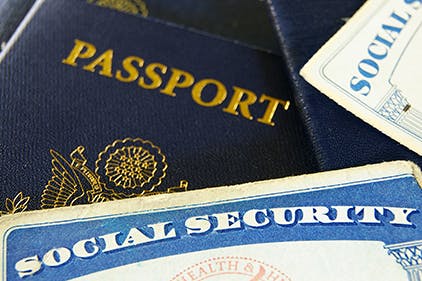Everything You Should Know About Form I-9
Form I-9 (Employment Eligibility Verification documents each new hire’s authorization to work in the U.S. - citizen or non-citizen.

Form I-9 (Employment Eligibility Verification) is an integral component to onboarding an employee. The purpose of an I-9 is to document each new hire’s authorization to work in the U.S. - citizen or non-citizen. Since November 6, 1986, all new hires have had to fill out this form. All new hires should be reported to the appropriate state within 20 days of his or her start date.
How To Fill Out Form I-9
Section 1
Form I-9 is divided into three sections: employee, employer, and updating and reverification. Section 1 is the portion of the form an employee completes, and must be done so no later than the time of hire. This section includes items such as name, address, social security, and U.S. residential status. It is the employer’s duty to ensure each employee fills this out on time. Section 1 has a 'preparer/translator' certification area if someone should need assistance filling out his or her form. This person cannot sign Section 1, however.
Section 2
Section 2’s responsibility lies within the hands of the employer. Employers must examine evidence of identity and employment authorization within three days of a hire’s start date. Employers cannot specify which items an employee must bring in to verify these statuses. There are three lists of items that qualify for verification. An employee can bring in a List A item, such as a passport, or a combination of a List B and C item, such as a driver’s license and Social Security Account card. Employees unable to present required documents can present a receipt in lieu of a document listed on the last page of an I-9. After that, he or she have 90 days to bring in the official documents from either List A, or List B and C.
Employers record document title, document number, issuing authority of the document, expiration date of the document, and the date of employment. They can photocopy the documents, and must offer copies to employees. However, they must keep the original I-9 document. Employers also sign and date Section 2.
Section 3
Section 3 of I-9 is only completed if an employer needs to update or re-verify Form I-9. This happens when an employee’s work authorization or document of work authorization has expired. Employers also fill it out when an employee is rehired within three years of the date he or she originally filled out an I-9 or when an employee has a legal name change. Instead of filling out Section 3, employers can have employees fill out a new I-9.
After completing Form I-9, some employers use E-Verify, an online tool that compares information from the I-9 to data from the U.S. Department of Homeland Security and Social Security Administration. This is not required of employers, but more than 700,000 employers utilize the system today.
The Don’ts of Form I-9
When hiring a new employee, under federal law employers must not:
- Discriminate against anyone on the basis of origin, citizenship, or status.
- Request more or different documents than are required or listed on Form I-9.
- Reject genuine-looking documents or ask for certain documents to verify employment.
- Retaliate against any individual who should file charges or work with the Department of Justice’s Immigrant Employees Rights Section.
- Hire anyone they know to be unauthorized to work in the U.S.
Not verifying employment properly through Form I-9 can result in civil fines, criminal penalties, debarment from government contractors, a court order seeking back pay, or a court order requiring an employer to hire a discriminated person.
Keep reading: related insights
Payroll Insights Newsletter
Subscribe to our quarterly newsletter for exclusive payroll insights.
